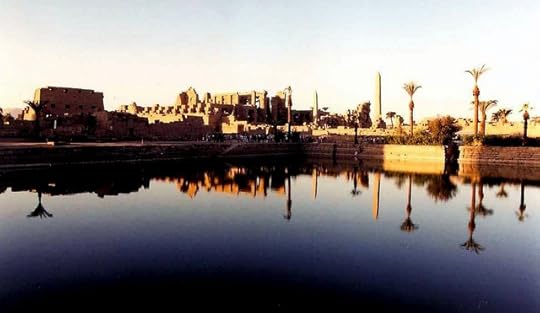The Temple Complex of Karnak, Day 287
The Temple Complex of Karnak is a hop, skip, and a jump from downtown Luxor (weather permitting). It is still incredibly hot, but Christi and I take an early morning wander up to this vast open-air museum and largest ancient religious site in the world. It is the second most popular tourist site in Egypt after the pyramids at Giza. This is hard-core Egyptology for the devotees of Ancient Egypt. It strikes me that your average tourist does not fall into this category, so why do so many people come here? Probably because the tourists are all on guided tours and boy can those tour guides drone on all day about Ancient Egypt and the Pharaohs. I think there is a fine line between gaining a sense of Ancient Egypt without feeling as if was is studying Egyptian history at degree level. Or perhaps I’m just a bit stupid because for the life of me I cannot keeps the names, dates, gods, and dynasties straight.
OK, here goes, enough Karnak trivia to entertain without being overwhelming. And we do strive to entertain here at www.roderickphillips.com. We approach the complex via an avenue of Ram-headed sphinxes. Christi breaks out the Lonely Planet guide and we start our self-guided tour (I just can’t face hiring and then disappointing these earnest and enthusiastic tour guides and my eyes will surely glaze in about 5 minutes once they start their didactic endeavors). Karnak is not your average temple complex built by a single pharaoh. Karnak evolved over 1500 years and approximately 30 pharaohs contributed to its vast construction. In fact most of the complex is not open to tourists (thank goodness), only the area called the Precinct of Amun-Re which features the magnificent Hypostyle Hall. Originally designed by Hatshepsut, the hall covers 50,000 square feet with 134 massive columns in 16 rows. Each of the papyrus-shaped stone columns are covered with hieroglyphs – not to mention some more modern-day graffiti.
During the era of the New Kingdom Karnak was the most important place of worship in Egypt and was known as Ipet-Isut (The Most Perfect of Places). Few of the individual features of Karnak are unique, but the size and number of features are overwhelming. The deities represented range from some of the earliest worshiped to those worshiped much later in the history of the Ancient Egyptian culture.
My head spins all the way back to our hotel where our fixer, Jak, organizes a transfer to our cruise ship, the Nile Story. Christi and I are a little apprehensive before boarding, wondering whether Jak has sold us down the river so to speak. Fortunately he has done us proud. The boat is magnificent and our room (number 422) is sumptuously comfortable. The bed is big and has soft white sheets just like in a hotel. There is a marble-topped desk, a couch on which to relax and either watch color TV or stare out of a tinted glass sliding door at the scenery. The scene is completed by those two most decadent of delights: air-conditioning and a gleaming bathroom with sit-down toilet. And because Christi is feeling in a decidedly decadent mood at the moment she opens the sliding door and turns on the air-conditioning and we watch life pass us by on the greatest river in Africa.

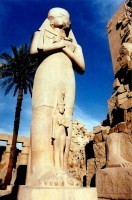
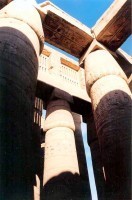
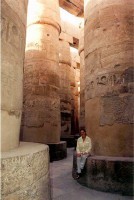
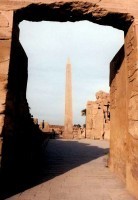
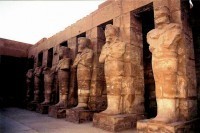
Blog post by Roderick Phillips, author of Weary Heart – a gut-wrenching tale of love and test tubes.
The post The Temple Complex of Karnak, Day 287 appeared first on Roderick Phillips.

